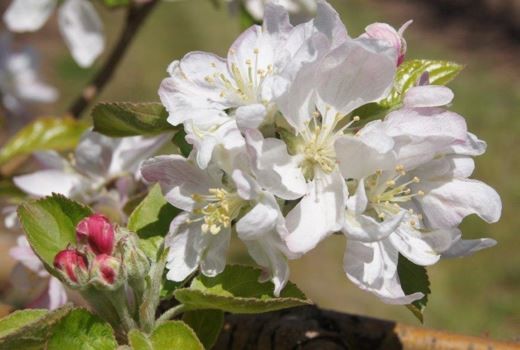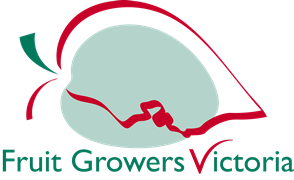
![]()
The most important single spray in the season: Thinning Apples
By Veronique Froelich, FGVL Industy Dev. Officer

A heavy crop presents two issues: small fruit in large quantities that deliver poor size, maturity and color which has little market value, and following this heavy cropping, an expected following weak return bloom, that impacts even more on the orchard profitability. Chemical thinning apple trees is critical to produce fruit of optimal quality.
During the past winter, a cumulative number of hours at or below 7.2 degrees Celsius explains the good vegetative and flower development we are currently observing. Now is the time to reduce the number of flowers. It has been demonstrated that thinning of bearing trees soon after bloom results in greater tree growth and a greater number of spurs when compared to later thinning. Other benefits include larger and more numerous leaves, increased trunk thickening, and greater root growth.
There is a “but”: If shortly after flower thinning a late frost occurs, the remaining fruitlets may suffer subsequent damages.
- Important considerations to keep in mind when thinning include:
- Know your apples development stage and understand what type of thinning agent you use as they have different physiological effects: pollination inhibitors are used for flower thinning, whilst hormone–type thinners, which are less effective during bloom, are used for fruitlets thinning.
- Take into account the natural post bloom fruit drop of your apples varieties: Gala and Granny Smith’s are usually heavier. The historical fruit setting characteristics of the orchard will give an indication about the strategy to adopt for each variety. Consult your records!
- Young vigorous trees versus older plants: the first ones are easier to thin than older, moderately vigorous trees.
- Pay attention to the weather conditions: different thinning agents present varying temperature and light dependence. Generally speaking, the 24 hours before and the 72 hours after the application of the growth regulator thinners are more important than actual fruit size at time of application. Temperatures under 15 degrees (as expected in the coming few days) after application of ethephon for example, may not result in effective thinning. Whilst the warm night we had yesterday can cause serious over thinning.
- Adapt your water volume: increased chemical rates per hectare do not necessarily increase thinning!
Read the label of your thinning agent very carefully! Spend some time on the Bureau of meteorology internet site to have a good understand about the weather conditions being forecasted.
Apple and Pear Australia is always a useful reference: check apal.org.au/getting-chemical-thinning/. The UC Davis internet site is also very informative on the subject of thinning: https://us6.admin.mailchimp.com/campaigns/wizard/neapolitan?id=925793
